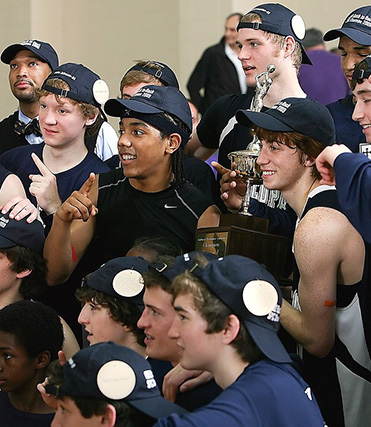13 steps to accomplish your team goals
As a manager of people, do coaches know how to lead their teams through the goal-setting process? Every team has a unique mix of individual and corporate goals, and managing those is an interesting process in itself.
 We’ve got to come up with, define and try to accomplish goals that are months away from fruition. That’s no easy task. But here is a list of 13 steps that can help your team develop its goals and begin down the path toward achieving them.
We’ve got to come up with, define and try to accomplish goals that are months away from fruition. That’s no easy task. But here is a list of 13 steps that can help your team develop its goals and begin down the path toward achieving them.
Steps to goal setting
1. Purpose. Everyone has to understand what the goals are, otherwise there’s an unclear reason for coming together as a team.2. Responsibilities. Does everyone know what their roles are? Have you talked to your captains about what you expect from them? Do your non-starters know that they’re non-starters, and are they OK with it?
3. Objectives. These are your team’s specific goals. Not just “we want to win conference,” but “we want to hit .350 each match” or “we want our opponents to have two reception errors per game.” Objectives are your specific subsets of your overarching goals.
4. Process. This is probably where the coach comes in after your team tells you what goals they’ve decided upon. Hopefully, they’re attainable. If they are, then you’ve got to give them the hard truth about the amount of work they’re going to have to put in to fulfill their objectives.
5. Working conditions. Saying they want to accomplish a goal is different from doing what it takes to be successful. It takes commitment, hard work and focus everyday. Even when they’ve got a pile of homework. Even when they’re having relationship troubles. Even when they’re tired. The teams that can push through the ups and downs of a season have a solid chance of success.
6. Resources. If one of your team’s goals is to be nationally ranked, but your department won’t financially support traveling to play a tough schedule, that goal will be at risk. Some goals are out of your team’s control, and I would challenge them to come up with things that they’re completely in control of.
7. Targets. In our world, these could be called team rules. Whether you’re coming up with them, or your team captains set the norms for your team, they must be clear and must be followed. Your team may decide they want to refrain from eating fast food all season in order to fulfill their objectives. That’s a target.
8. Authority. Is it clear who’s in charge? That’s a bit easier on a sports team, but there’s usually a little ambiguity there. Obviously, the coach is in charge and your captains run the show at the ground level. But what about the freshman phenom on your team. Does their playing status give them authority?
9. Training. Surely, the coach is willing to train the team. But is the team willing to put in the mental and physical effort to get better? Quality training is only as good as the athletes who use it.
10. Priorities. Has your team made training for their sports season a priority? Are they in the weight room during the offseason? Are they training hard in the summer? The things that take priority in people’s lives are the things they tend to spend their time on. Is your team and its success a priority for every one of your players?
11. Progress. How will they define success? And is there a way to measure it along the way? Maybe you can encourage your team to assess their goals every couple of weeks, or maybe just your captains. But someone (besides the coaching staff… these are the team’s goals, after all) has to be willing to see if the team is on or off course.
12. Supervision. Coaches can holler and yell, but I believe that our team’s hold the highest level of respect for each other. Equip and prepare your captains to lead through good times and bad, always being there to help or take control if necessary.
13. Example. Are your team leaders the hardest working people in the gym? Are they the one’s who are rallying their teammates for offseason workouts? Well, then you’ve got fine leaders by example.
That’s a lot of info, but I think there are good points in there that I may not have thought about before. Even if we use just a few of these, our goals may turn out to be more accessible. And that’s always a good thing.
Dawn Redd is the head volleyball and assistant track & field coach at Beloit College, Beloit, Wisconsin.





